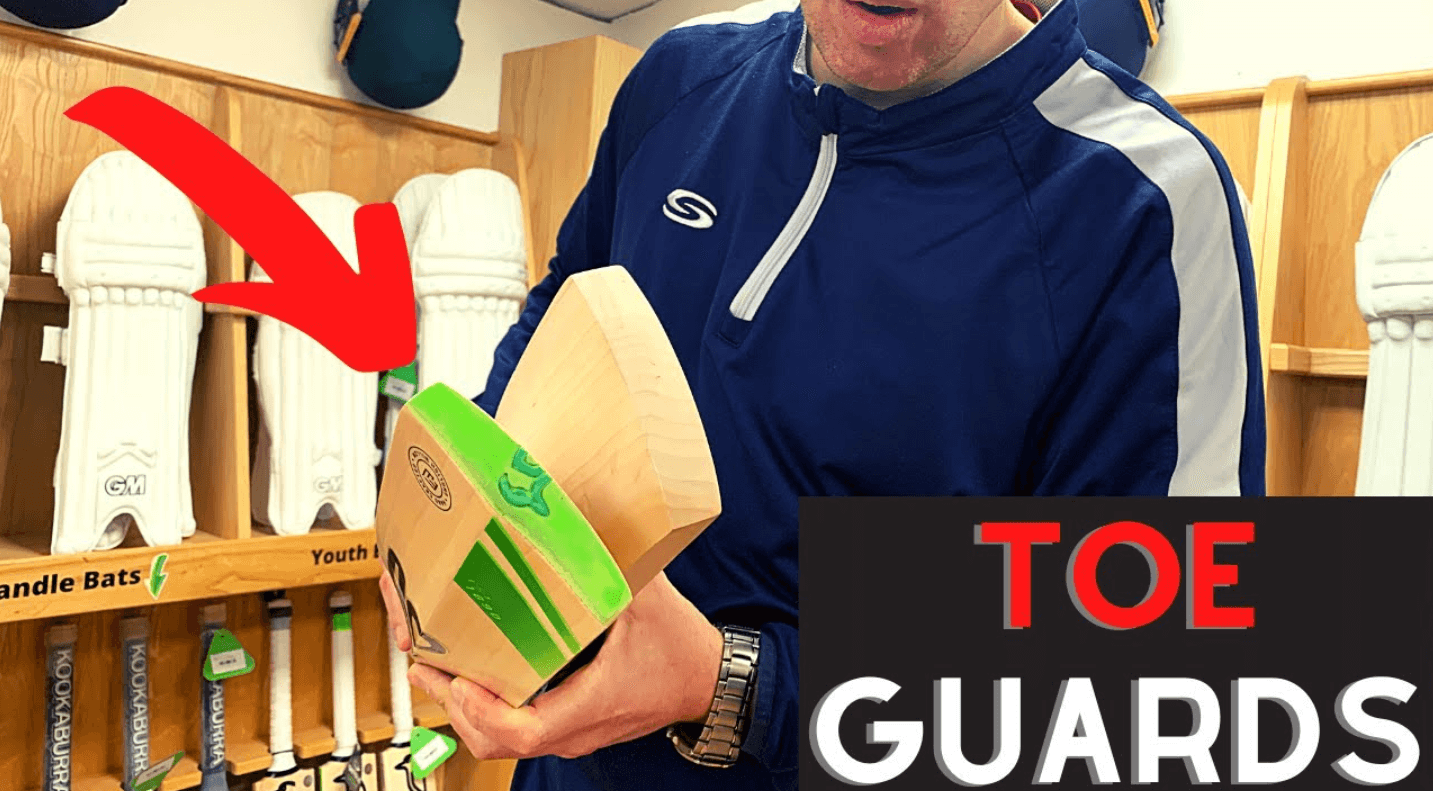

Like any other sport, cricket is a game that requires immense hand-eye coordination. Batters are supposed to score runs off a bowl that can approach them at speeds as high as 150 km/hr or a spin so strong that it takes them aback once the ball bounces off the pitch. Protection of your equipment is paramount in sports. Cricket, is no exception.
The cricket bat is made of high quality wood that is designed to resist such impactful deliveries released from the bowlers’ hand. The willow of the bat has thickened over a period of time to stay in-line with the fast paced and power hitting nature of the sport that we see today. Moreover, protective equipment like helmets, elbow and thigh guards, pads, have made it possible for bowlers to bowl at faster rates fearlessly.
In order to withstand the repeated impacts of pace deliveries, batters protect the bat at its bottom-end with a toe guard. This toe guard serves two functions. A new cricket bat usually has an attached toe guard. However, it can wear down easily. Thus, a new tow guard of high quality rubber will add to the resistance of the bat, thereby protecting it from fast paced deliveries. The second function of this toe guard is to reduce the amount of moisture uptake to the cricket bat from the pitch. If the moisture penetrates the wood, then it can weaken the bat significantly.
Installing a toe guard on the bat must not be done minutes before the match. A day before the match, the cricketer has to attach a toe guard with an adhesive. Once attached, the bat is left untouched for 10 to 12 hours in a position where the toe-end of the bat remains constantly compressed. Available in multiple colors, these toe guards may also be attached after roughening the toe-end of the match with sandpaper to increase its retention. A toe guard has now become a mandate in professional cricket for batters globally.




